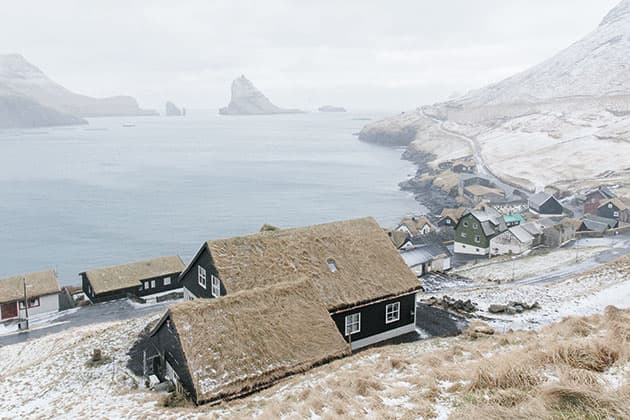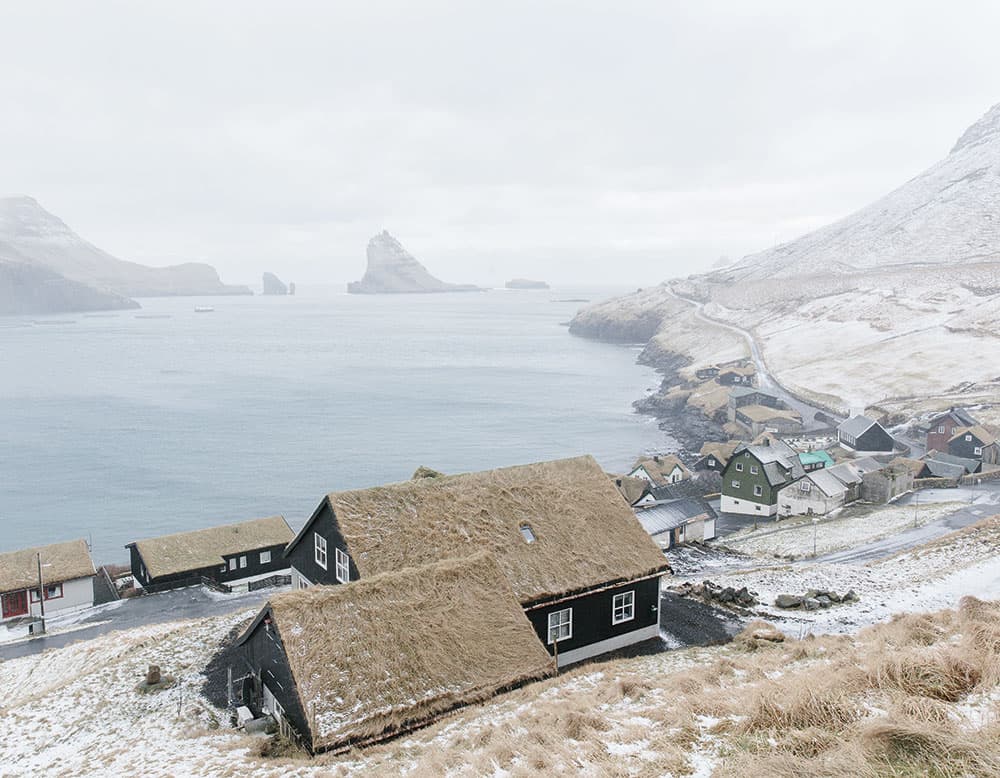
The grass-covered roofs of Bøur on Vágar Island with a view of Tindhólmur and Gáshólmur in the distance
The Zeiss Photography Award is an international photography contest that was launched in collaboration with the World Photography Organisation in 2016. This year the theme was ‘Seeing Beyond’ and was won by Kevin Faingnaert, who produced a poetic and beautiful document depicting life on the remote and sparsely populated villages on the Faroe Islands. He tells us about the process behind his project.
Looking back through your photography projects, is it fair to say that your work is defined by your exploration of subcultures and communities?
Yes, I’d say that’s true. In my personal work, I’m mainly drawn to subcultures and communities who are removed from the mainstream. It’s a childish curiosity to look behind dark corners and closed doors.
I’m particularly interested in the elements that bind these subcultures. In Belgium, I focused on professional wrestlers and banger racers. It’s not really the sport that interests me, but the wrestlers and racers themselves. So with this project, I wasn’t so interested in the Faroe Islands themselves, but the people who live in those remote, isolated places.
I look for tales I haven’t heard before and these subcultures are a huge source for unheard stories. It’s like stepping into another world. Every time I went backstage at a wrestling event, it was as if I was walking into a second life. And when I think back to my month on the Faroe Islands, I feel like it was a dream. I start to get addicted to stepping out of my comfort zone and live those second lives for a couple of weeks or months for a photography project.
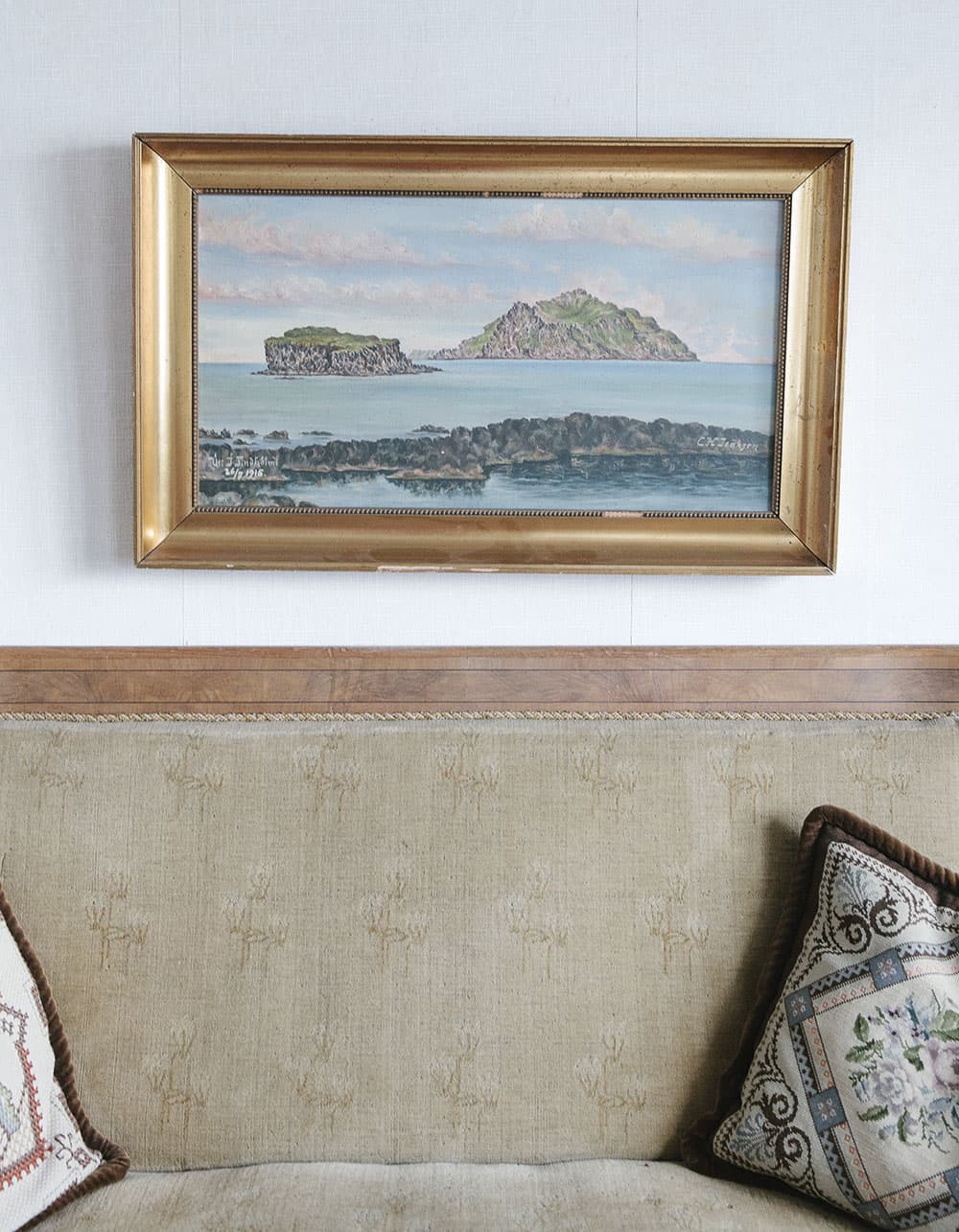
A painting of the Faroe Islands sits above a sofa inside Sigurd Nordendal’s house in Bøur, a village in the west of the islands
Can you tell me a bit about your project ‘Førayar’? Why did you select this place to document?
I’d wanted to go to the Faroe Islands for a number of years, before I even thought about a photography project. The Faroe Islands are an archipelago of 18 islands, separated by narrow sounds or fjords, in the middle of the North Atlantic, halfway between Scotland and Iceland. I spent a month on the islands last February, but when I arrived armed with a Canon EOS 5D Mark III and a couple of prime lenses, I didn’t have a clue what I was going to focus on.
The idea behind this series only came to me after I’d spent a couple of weeks on the islands, by which time I’d learned about the many remote and sparsely populated villages. The populations of the villages on the smallest and toughest islands have seen a sharp decline over time. In many of them, a lot of houses stand empty. The Faroese are constantly moving away from the smallest villages, to settle in the bigger ones. Young Faroese people move abroad – mainly to Denmark, to travel or to pursue a higher education – but most don’t return to their home towns afterwards. Eventually, my goal became to document these remote villages before they are completely abandoned.
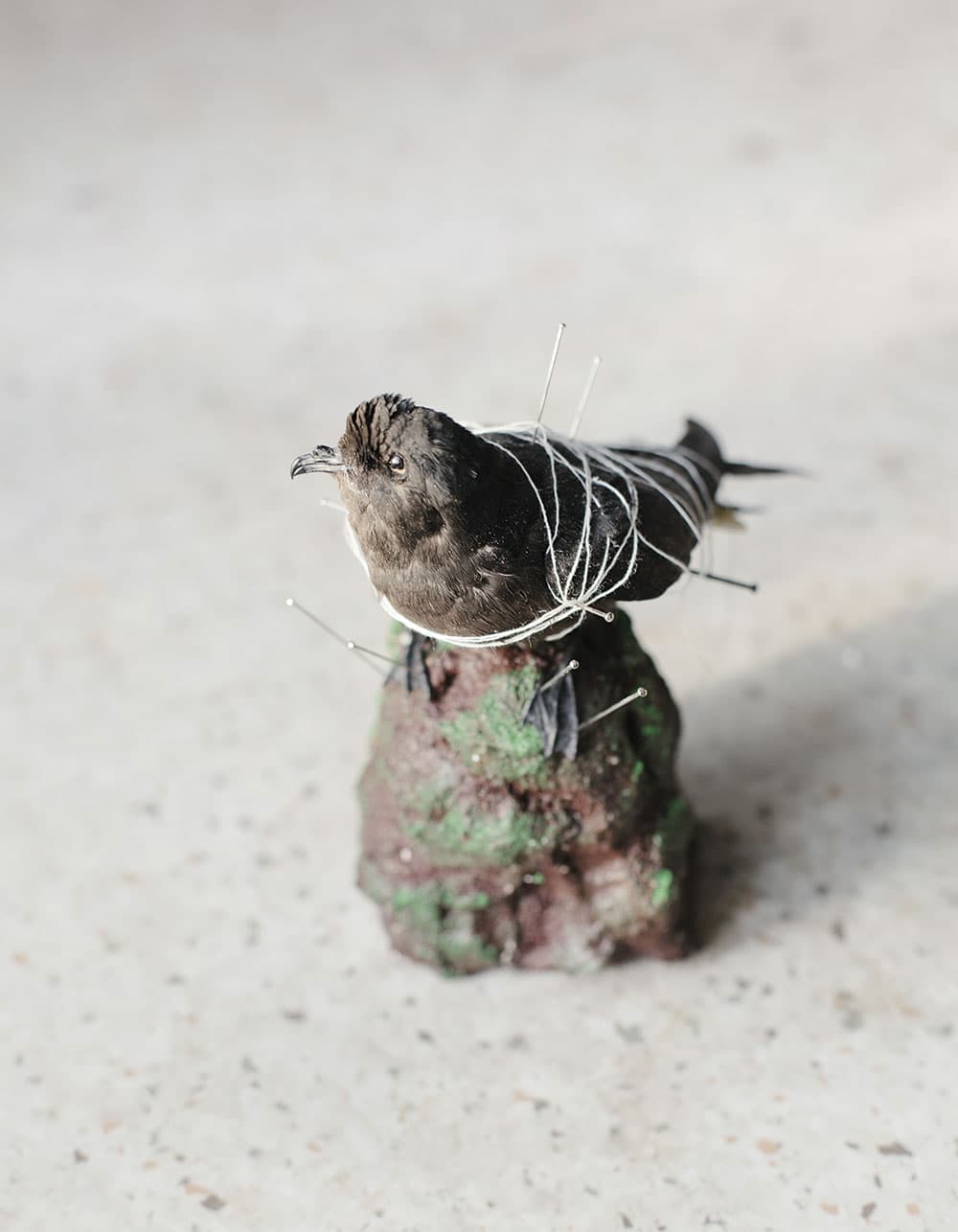
A taxidermied storm petrel by local wildlife expert Jens-Kjeld Jensen. He lives on Nólsoy, a village and small island
How did you approach the people of the Faroe Islands and earn their trust?
There are a variety of things I did to get closer to local people. I spent a lot of nights on local people’s couches. I found them online through Couchsurfing, a platform for members to ‘surf’ on couches by staying as a guest at a host’s home. This wasn’t in the remote villages, though, but in the main ones where around 1,000 people live. I used these as a base to visit the smaller locations.
On the islands, everybody knows everybody, so there was always a connection between where I was staying and the more remote villages I wanted to visit. Either the people are related, they are friends of friends, or they know each other’s names through stories. In a way, my project felt like going from place to place with a chain letter. When I spent a couple of hours with someone, I always asked if he or she could direct me to the next person. It opens a lot of doors when you can drop some names. Faroese people love to talk about each other – in a good way.
When I didn’t have a connection in a village, I just walked around for a couple of hours. Some villages only have one road, so it didn’t take long for someone to notice me. It was sometimes very cold and windy on the islands. Faroese people are quite shy and introvert, but they are also very friendly and hospitable. When somebody saw me freezing outside, it didn’t take long before they invited me to warm up inside. I would start talking with them, and before I knew it I’d be eating dinner with the whole family. As some villages only have around 10 inhabitants, it was quite easy to get to know almost the entire village in one day.
When working on a project such as this, I always try to embed in the community. I went to church with local people, although I’m not religious. I helped shovel snow on driveways, I went fishing with local fishermen, I made pictures for a newlywed couple. I didn’t rent a car, but hitchhiked wherever I could. It’s a good way to get to know people. When it came to communicating, I found that everybody on the islands spoke English very well. Even the old people can speak basic English.
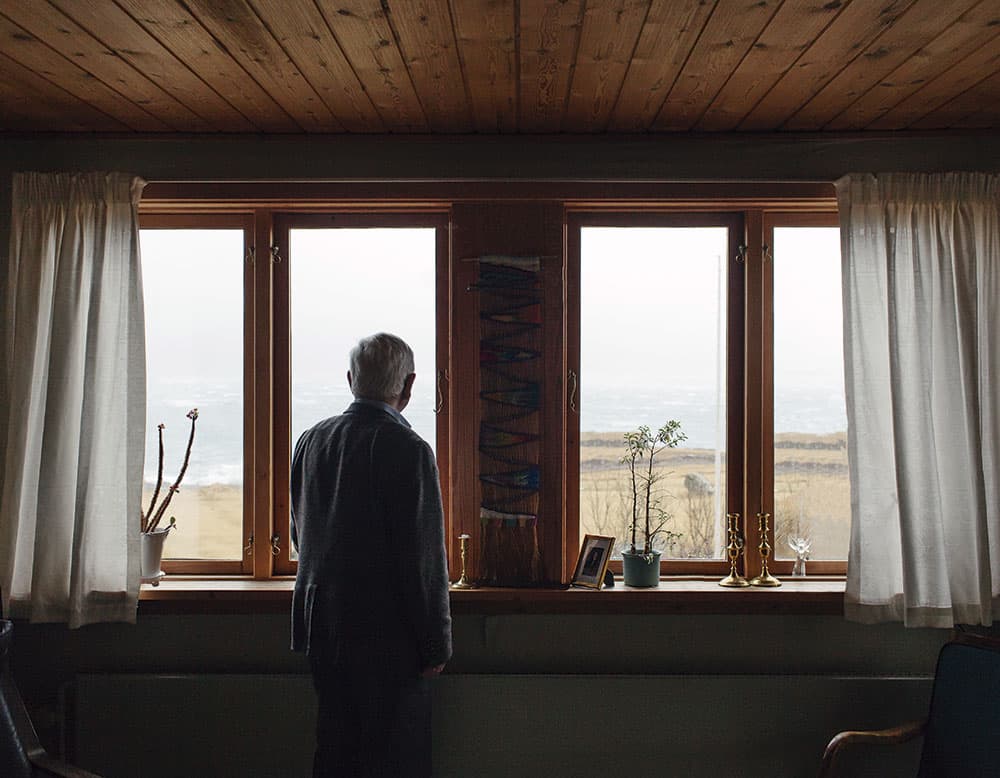
Joan Hendrick, author of the first Faroese dictionary, overlooking the Atlantic from his house in Kirkjabøur
What are you ultimately hoping to achieve with a project such as ‘Føroyar’?
Honestly, I never wanted to make any big statement with this series. One of the cool things about photography is its ability to create atmospheres that viewers can step into and explore. I wanted to capture the remoteness of these depopulated villages, the far- northern landscape and a sense of the people who live there. I want to give the viewer a glimpse into Faroese village life.
You work blends documentary, landscape and portraiture. Why take this approach?
To capture a bit of everything of a place. One image of a person can tell the viewer something about that person. Combine it with an image of his or her surroundings, however, and the story becomes more detailed.
Kevin Faingnaert
Kevin Faingnaert is a documentary and portrait photographer who lives in Ghent, Belgium. As winner of the 2017 Zeiss Photography Award, he takes home €12,000-worth of ZEISS lenses and €3,000. Visit www.kevinfaingnaert.com.

